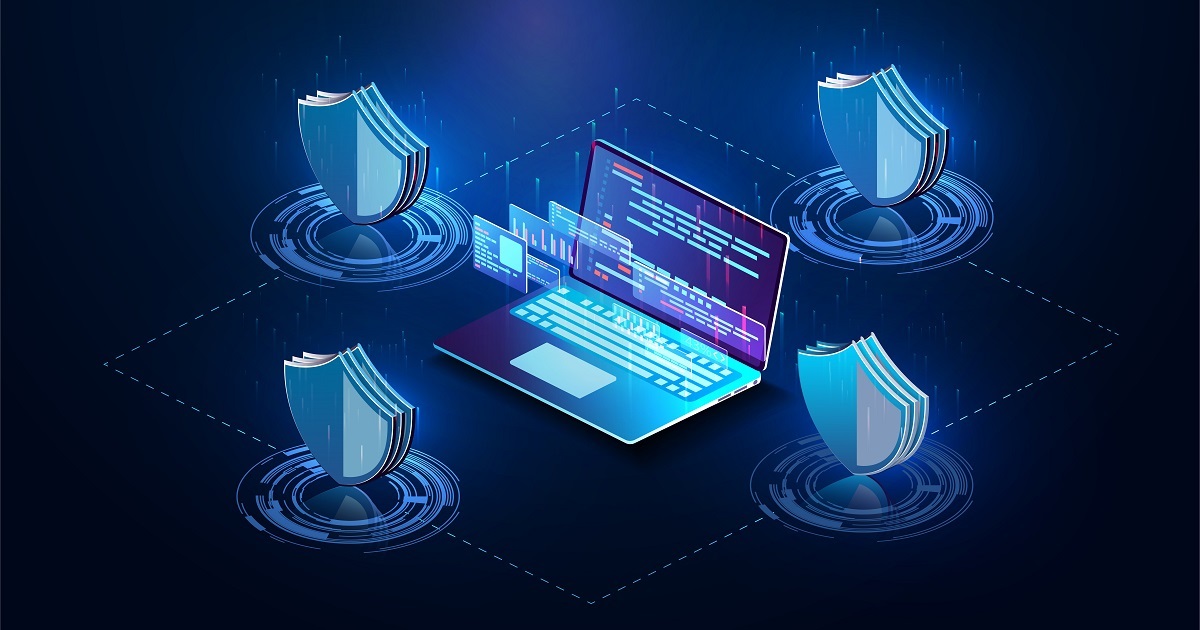
Hyper-Converged Infrastructure, Application Infrastructure
Nutanix | October 27, 2022
Nutanix , a leader in hybrid multicloud computing, today announced new features in its Cloud Platform to accelerate the adoption of Kubernetes running both at scale and cost-effectively. The company announced broad support for leading Kubernetes container platforms, built-in infrastructure as code capabilities, and enhanced data services for modern applications. These new features allow DevOps teams to accelerate application delivery with the performance, governance, and flexibility of the Nutanix Cloud Platform while allowing customers to maintain control of their IT operating costs.
“Kubernetes deployments are inherently dynamic and challenging to manage at scale. “Running Kubernetes container platforms cost-effectively at large scale requires developer-ready infrastructure that seamlessly adapts to changing requirements. Our expertise in simplifying infrastructure management while optimizing resources—both on-premises and in the public cloud—is now being applied to help enterprises adopt Kubernetes more quickly. The Nutanix Cloud Platform now supports a broad choice of Kubernetes container platforms, provides integrated data services for modern applications, and enables developers to provision Infrastructure as Code.”
Thomas Cornely, SVP, Product Management, Nutanix
According to Gartner, by 2027, 25% of all enterprise applications will run in containers, an increase from fewer than 10% in 20211. This is a significant challenge for many given most Kubernetes solutions are not meant to support enterprise scale, even less can do so in a manner that is cost effective. The Nutanix Cloud Platform enables enterprises to run Kubernetes in a software-defined infrastructure environment that can linearly scale. Additionally, whether running Kubernetes on-premises or in the public cloud, Nutanix delivers a cost-effective solution that can help lower total cost of ownership by up to 53% when compared to other native cloud deployment solutions.
New capabilities, including broad support for leading Kubernetes container platforms, built-in infrastructure as code capabilities, and enhanced data services, make Nutanix an even stronger proposition for enterprises looking to deploy Kubernetes at scale. Specifically, new enhancements include:
Broad Kubernetes Ecosystem: The Nutanix Cloud Platform, with the built-in AHV hypervisor, now supports most leading Kubernetes container platforms with the addition of Amazon EKS-A. This builds on a large ecosystem including Red Hat OpenShift, SUSE Rancher, as well as Google Anthos, and Microsoft Azure Arc for edge deployments, along with the native Nutanix Kubernetes, Nutanix Kubernetes Engine (NKE).
Built-In Infrastructure as Code Operating Model: Nutanix also announced an updated API family along with its SDKs in Java, JS, Go and Python, currently under development. This will enable automation at scale and consistent operations regardless of location—in the datacenter, on the public cloud, or at edge—both of key importance to enterprises. Additionally, when combined with Red Hat Ansible Certified Content or the Nutanix Terraform provider, a DevOps methodology can be brought to infrastructure through automation leveraging Infrastructure as Code.
Strengthened Data Services for Modern Applications: Nutanix Cloud Platform’s web-scale architecture enables customers to start small and scale to multi-PB sized deployments as application needs grow. It is the only platform to unify delivery of integrated data services with file, object, and now adding database services on the same platform for Kubernetes-based applications. Today Nutanix launched Nutanix Database Service Operator for Kubernetes, which enables developers to quickly and easily provision and attach databases to their application stacks directly from development environments. The open source operator is available via artifacthub.io as well as by direct download at GitHub. Additionally, Nutanix Objects now supports a reference implementation of Container Object Storage Interface (COSI) for ease of orchestration and self-service provisioning. It also adds support for observability using Prometheus. Lastly, Objects is now validated with modern analytics applications including Presto, Dremio, and Vertica, along with Confluent Kafka to efficiently enable large-scale data pipelines often used in real-time streaming applications.
These new features build on the Nutanix Cloud Platform’s ability to handle the dynamic demands of Kubernetes applications at scale. With the Nutanix hyperconverged infrastructure, performance and capacity scale linearly, resilience is delivered from the ground up with self-healing nodes, and persistent storage is natively integrated. Additionally, the Nutanix Cloud Platform can help deliver cost efficiencies by eliminating unused compute and storage resources. For customers looking at cloud integrations, the same Nutanix value is delivered across hybrid multicloud endpoints with full license portability across edge, datacenter, service provider, and hyperscaler points of presence.
“When we decided to bring the core platform for our solutions in-house, we decided to take a modular containerized approach to give us the desired flexibility and simplify management by maintaining customization as configurations,” said Larry McClanahan, Chief Product Officer, Nymbus. “Our partnership with Red Hat and Nutanix gives us the flexibility to innovate, the speed to get to market fast, and the tremendous scalability to support ongoing growth. We’re thrilled that we can better help our customers succeed in the digital banking market with unique solutions.”
"Container development platforms promise faster application development speed, but will only be deployed by organizations who can maintain compliance, day 2 operations, and cost management control at scale,” said Paul Nashawaty, Senior Analyst at ESG. “Nutanix offers a compelling path to speed the deployment of modern applications at scale and in a cost-effective manner, with full choice of Kubernetes container development environments and cloud endpoints."
About Nutanix
Nutanix is a global leader in cloud software and a pioneer in hyperconverged infrastructure solutions, making clouds invisible, freeing customers to focus on their business outcomes. Organizations around the world use Nutanix software to leverage a single platform to manage any app at any location for their hybrid multicloud environments.
Read More

Application Infrastructure, IT Systems Management
Scale Computing | August 23, 2022
Scale Computing, a market leader in edge computing, virtualization, and hyperconverged solutions, today announced that CRN®, a brand of The Channel Company, has named it a winner of the 2022 CRN Annual Report (ARC) Awards in both the Edge Computing category and the Converged/Hyperconverged Infrastructure category. This is the fourth consecutive year Scale Computing has been recognized as a CRN ARC Award winner, and the company once again swept all of the subcategories including Product Innovation, Support, Partnership, and Managed & Cloud Services in both Edge Computing and Converged/Hyperconverged Infrastructure.
The company also announced a “save the date” for the 2023 Scale Computing Platform Partner Summit, February 15-16 in Las Vegas, NV. Feel free to download the dates to your Google Calendar, Outlook Calendar, or iCal.
With a 37-year history, CRN’s ARC Awards recognize best-in-class vendors that are devoted to boosting IT channel growth through innovation in technology and partner strategy. Through the ARC Awards — known as one of the most prestigious honors in the IT industry — solution providers offer key feedback that commends technology manufacturers for designing channel-friendly product offerings, developing strong partner programs, and building long-term successful relationships with solution providers.
“This recognition represents the ‘Voice of the Partner’ and we are very proud to be named the leader in both Edge Computing and Converged/Hyperconverged Infrastructure. “This year is particularly meaningful as vendor survey participation was mandatory, ranking us number one above all of our competition. When we founded Scale Computing, we set out to create a company that would be the best vendor our customers and partners would ever work with. Sweeping all subcategories over our competitors for years in-a-row proves we are delivering on that promise.”
Jeff Ready, CEO and co-founder, Scale Computing
Scale Computing Platform brings simplicity, high availability, and scalability together, replacing the existing infrastructure and running applications in a single, easy-to-manage platform. Bringing faster time to value than competing solutions, SC//Platform enables organizations to run applications in a unified environment that scales from 1 to 50,000 servers. Regardless of hardware requirements, the same innovative software and simple user interface provides the power to run infrastructure efficiently at the edge, in the distributed enterprise, and in the data center.
The ARC Awards are based on an invitation-only research survey conducted by The Channel Company. Responses from 3,000 solution providers across North America were evaluated in this year’s survey, rating 82 vendor partners across four criteria: product innovation, support, partnership, and managed cloud services. Scores were awarded in 25 major product categories in technology areas that are critical to channel partner success.
“It’s our pleasure to honor vendors that consistently deliver top-performing products and services to establish and foster successful channel partner relationships,” said Blaine Raddon, CEO, The Channel Company. “In addition to highlighting our winners, CRN’s Annual Report Card Awards provide vendors with actionable feedback and insight into their current standing with partners that can be incorporated into their channel strategies in the future. We look forward to offering our congratulations to all the award recipients at XChange 2022 in August.”
Winners will be featured throughout The Channel Company’s XChange 2022 conference, taking place August 21-23 in Denver, CO. Coverage of the CRN 2022 ARC results can be found online at www.CRN.com/ARC and will be featured in the October 2022 issue of CRN Magazine.
About Scale Computing
Scale Computing is a leader in edge computing, virtualization, and hyperconverged solutions. Using patented HyperCore™ technology, Scale Computing Platform automatically identifies, mitigates, and corrects infrastructure problems in real-time, enabling applications to achieve maximum uptime, even when local IT resources and staff are scarce. Edge Computing is the fastest growing area of IT infrastructure, and industry analysts have named Scale Computing an outperformer and leader in the space, including being named the #1 edge computing vendor by CRN. Scale Computing’s products are sold by thousands of value-added resellers, integrators, and service providers worldwide. When ease-of-use, high availability, and TCO matter, Scale Computing Platform is the ideal infrastructure platform.
About The Channel Company
The Channel Company enables breakthrough IT channel performance with our dominant media, engaging events, expert consulting and education, and innovative marketing services and platforms. As the channel catalyst, we connect and empower technology suppliers, solution providers and end users. Backed by more than 30 years of unequalled channel experience, we draw from our deep knowledge to envision innovative new solutions for ever-evolving challenges in the technology marketplace.
Read More

Hyper-Converged Infrastructure
Sunlight | June 30, 2022
Sunlight.io, the edge infrastructure company, today announced support for the NVIDIA Jetson™ edge AI platform, and the Lenovo SE70, with the launch of its beta program — ‘Project Rosie.’ Sunlight NexVisor is the first full hyperconverged stack to support the Arm-CPU-based NVIDIA Jetson. Sunlight NexVisor coupled with the Lenovo SE70 makes it easy to deploy AI applications anywhere at the edge. Application developers can be the first to access the technology and test their AI applications by applying here.
AI is a ‘killer application’ at the edge where it is bringing real-time “insight to action” across a wide range of use cases. For example, computer vision — combining cameras, video streaming and analytics — is being implemented at drive-thrus nationwide for faster and more personalized food ordering; on manufacturing production lines to instantly identify and remove faulty items; and across smart cities to enhance population and crowd security. These sorts of AI applications need high levels of processing power with low latency and reliable networking in order to give real-time results.
Enterprises want to replicate the simplicity of the hyperconverged infrastructure they enjoy in their core data centers for their edge AI applications. However, datacenter HCI isn’t able to run in the constrained environments that exist at the edge due to their large RAM and CPU overhead and lack of edge management capabilities. This makes edge deployments extremely resource intensive to manage and hard to scale.
Sunlight NexVisor is the only hyperconverged stack that is able to run on both x86 and Arm architectures and with a tiny footprint suitable for constrained edge environments. It includes centralized management and application deployment capabilities. NVIDIA Jetson is the world's leading platform for AI at the edge. NVIDIA Jetson modules are small form-factor, high-performance computers containing an Arm processor and GPU. The combination of Sunlight NexVisor and the NVIDIA Jetson-powered Lenovo ThinkEdge SE70 makes it possible to run demanding edge AI applications in harsh environments that span hundreds or thousands of sites with easy single-pane-of-glass management, low TCO and tiny power and space requirements. Sunlight is a member of NVIDIA Inception, a global program designed to nurture cutting-edge startups.
Scott Tease, Lenovo’s VP for HPC and AI said, "Our customers realize the advantages of edge AI and deploying solutions closer to the point of data capture to run real-time inferencing. That is why we are so excited to be partnering up with Sunlight as they support our edge portfolio to significantly improve the efficiency and economics of AI deployments for customers worldwide."
“We are excited to launch this exclusive beta program for users who need to run efficient, manageable AI out where the data is generated — at the edge. “Sunlight already offers full support for the Lenovo ThinkEdge and ThinkSystem range, including the Intel-based SE30, SE50, SE350 and SE450. Together, we’ve been able to produce a truly industry-first solution by combining Sunlight’s turn-key, edge-as-a-service offering with Lenovo’s leading AI edge platform powered by NVIDIA Jetson. Sunlight was born out of a collaboration with Arm back in 2013 to build a lightweight hypervisor, and we’re seeing huge demand for the use of Arm-based servers at the edge due to their performance and power-efficiency.”
Julian Chesterfield, Founder and CEO of Sunlight
About Sunlight
The Sunlight Edge is a reliable, secure, zero-touch and economic infrastructure that helps turn your critical edge data into real-time insight and action across your retail stores, manufacturing lines and smart cities.
Sunlight makes running and managing applications and infrastructure at the edge as easy as in the cloud. Sunlight works with efficient, ruggedized edge hardware — so you can consolidate all of your in-location edge applications with full isolation, security and high availability.
Read More